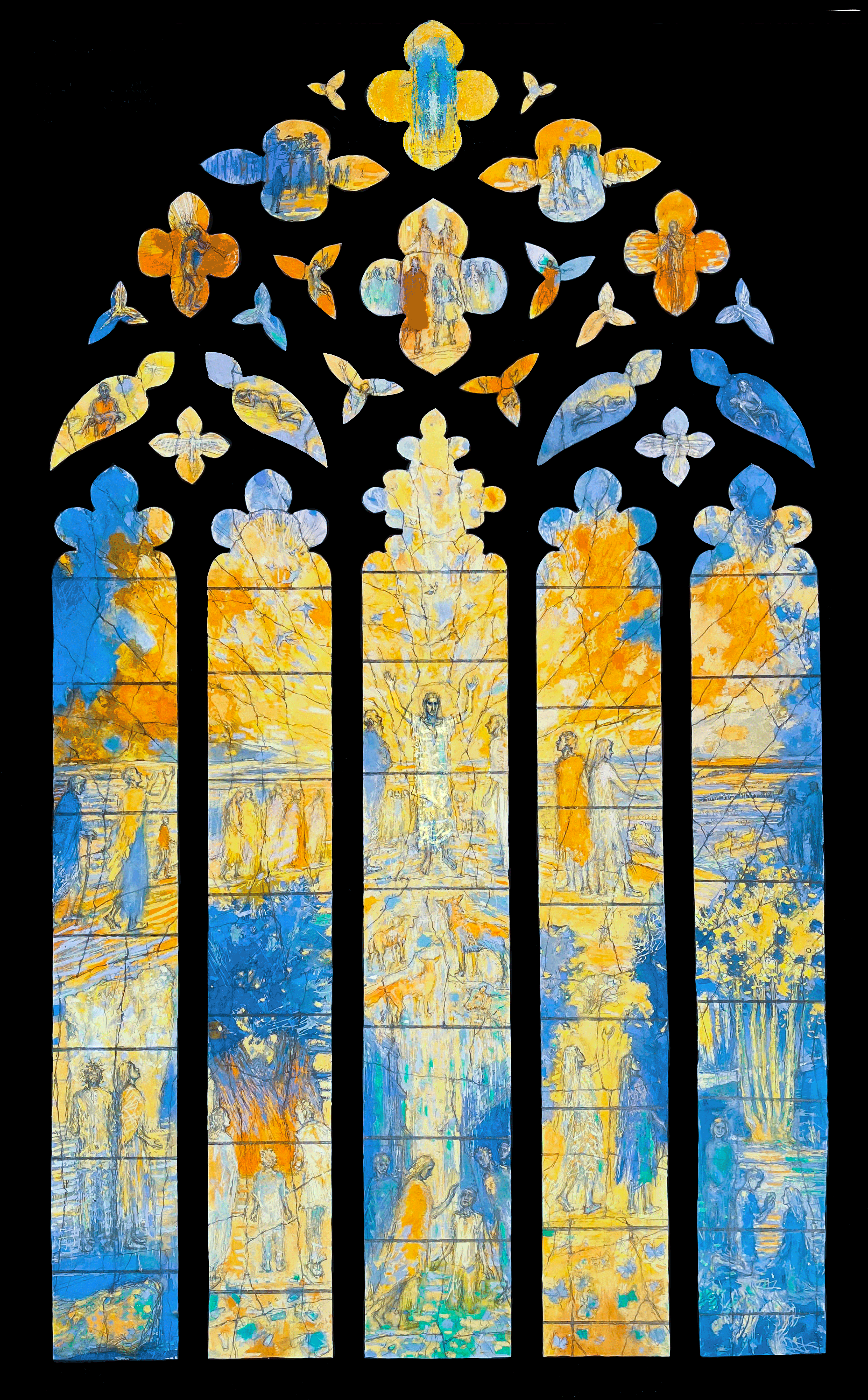
"SEEING"

THE ARTIST DESCRIBES HIS VISION:
The theme is” Seeing”. Seeing the Glory of God: epiphanies in ordinary and extraordinary moments in life. This is expressed in the centre of the window in the story of the Transfiguration of Christ, divinity seen amongst us. The central figure, incidentally, is a reminder, with outstretched arms, of the faded Christ on the cross in the same position in the current window.
Various other figures, and creatures, approach this central group. In the inner right hand light a couple also stands on the hill of transfiguration, looking both at what is happening near to them as well as out over a vast plain, and finding revelations there too. To the right, two further figures, a father and son, are themselves “in a mountain, seeing the land. what it is”. Landscape recurs throughout the window, the continuous horizon suggestive of Salisbury Plain, scattered with clumps of trees and barrows. Elsewhere, two young women ”lift up their eyes round about, and see”. They see ... long tailed tits in straggling bushes. Below, a crowd of butterflies, here, as in the medieval imagination, a symbol of resurrection.
In the lower part of the inner left hand light, a family draws near an ancient yew tree, contemplating the works of God. Like the young Jesus in the temple the child here seems to lead in understanding. Other embodiments, like the yew, of the layers of time in a place, are scattered on the ground. In this case, neolithic ritual axeheads, again of Wiltshire significance. In the adjacent left hand light two figures stand transfixed by the mystery and meaning of their surroundings, looking into the sky, and towards a standing sarsen stone. At the bottom of the right hand light a group of children is seen by a river, alders beyond; a familiar Tisbury landscape. They are looking at something found ... a mere pebble from the
stream?
Renewal of sight, actual or metaphorical, is the subject of other scenes. In the central light, Jesus heals a blind man. The setting here is a slightly indeterminate streetscape, although 13th century buttresses are indicated. And in the left hand light, a man is suddenly aware of “seeing out of obscurity".
In the tracery, a swarm of shapes of varying sizes, the theme moves into that of resurrection, of being changed, of seeing the risen Christ. Sleep; death; mourning; suffering. Then, disjointed figures struggle to realise their new form; others (including, perhaps, a Stukeley, an Aubrey, a Herbert) approach someone with welcoming arms, in a kind of gateway at the summit of
the window. “Trumpets” sound to the sides.
Many of the small shapes contain moths (the strange, unearthly plume moth), like the butterflies below a representation of “being changed”.